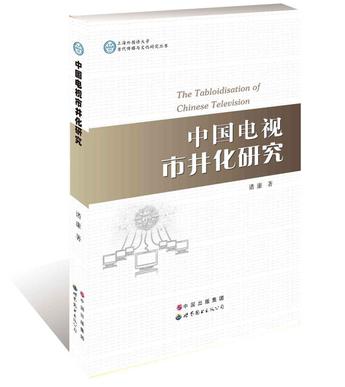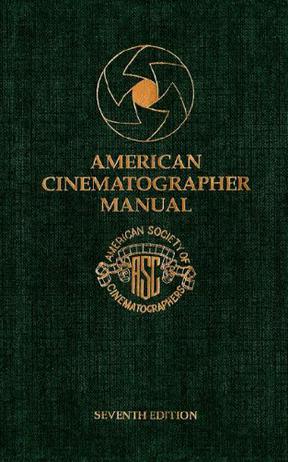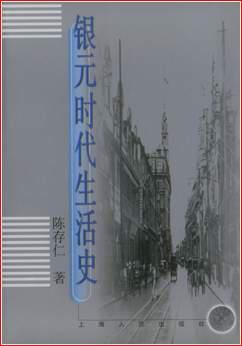 中国电视市井化研究:英文txt,chm,pdf,epub,mobi下载 中国电视市井化研究:英文txt,chm,pdf,epub,mobi下载作者:诸廉 出版社: 世界图书出版公司 出版年: 2015-1 页数: 240 定价: 52.00 装帧: 平装 ISBN: 9787510057090 内容简介 · · · · · ·媚俗和市井化是电视市场化的必然产物,然而不同国家和市场的传媒市井化进程,时常会有不同的政治文化属性及表现形式。本书立足于文化分析和传播政治经学,针对具有中国特色的电视节目中的媚俗和市井化现象进行探讨,着眼于这一进程的文化属性,即其在不同的电视节目样式中吸引眼球、服务于电视商业化市场化的具体表现。本书结构从宏观到微观,从国家媒体到地方广电事业,最终以相对年轻的上海东方卫视为例,选取该频道上星之初的三个不同节目样式进行深入探讨,以揭示在具有中国特色的电视市井化进程中,各种政治文化属性的互动关联和各种表现形态。 作者简介 · · · · · ·诸廉,2006年于英国拉夫堡大学获得新闻传播学博士学位。现任上海外国语大学新闻传播学院副教授,执教多媒体、新闻传播、纪实电视、国外广播电视产业以及研究方法等课程;在英国伯恩茅斯大学任职数年,并获终身教职;还曾任职于电视机构(编导)以及时尚类杂志(编辑、记者)。这些经历使她对中外媒体都有深入且实际的了解。目前的主要研究方向为:传播政治经济学、新媒体与数字化及用户生成内容、新闻传播与全球化(包括全球新闻的文化模式、新闻的全球网络传播和国际新闻通讯社在世界新闻传播中的角色),以及英国主流电视媒体对中国以及中国相关事务的报道。 目录 · · · · · ·INTRODUCTION 001The Rock and the Hard Place 001 Dynamic City, Tabloid TV 003 Key Research Questions 005 Methodology 005 The Arrangement of the Thesis 006 · · · · · ·() INTRODUCTION 001 The Rock and the Hard Place 001 Dynamic City, Tabloid TV 003 Key Research Questions 005 Methodology 005 The Arrangement of the Thesis 006 PART ONE CHINESE MEDIA IN TRANSITION 009 CHAPTER ONE FROM MAOISM TO MARKET 009 The First Period 009 The Second Period 010 The Third Period 012 The Fourth Period and the Party Principle 013 CHAPTER TWO INSTITUTIONAL SHIFTS 018 Shifting Governance—Decentralisation 018 Shifting Finances—The Growth of Advertising 026 Shifting Environments: The Rise of the Internet 033 Shifting Corporate Structure—Consolidation and Conglomeration 037 Shifting Horizons: Imports, Exports and Transnational Alliances 044 CHAPTER THREE PROGRAMMING RESPONSES 054 Changing Emphases—From Instruction to Audience Building 054 Commerce and Representation—Tabloidisation 058 Tabloidisation with Chinese Characteristics 071 PART TWO SHANGHAI: MEDIA CITY 080 CHAPTER FOUR SHANGHAI, A UNIQUE METROPOLIS 080 The City as a City State 080 The City as a Cultural Laboratory 081 The City as a Consumer Centre 087 The City as a Media Hub 088 Summary 091 CHAPTER FIVE BROADCASTING IN SHANGHAI 092 A City in Motion: Developments and Opportunities 099 Emerging Broadcasting Markets: Competition and Commercialism 103 Consolidation and Specialisation: The Rise of the Shanghai Media Group 107 CHAPTER SIX THE DEVELOPMENT OF DRAGON TV 119 Motivation 119 Ambitions 120 Corporate Strategies 123 Competitions and Competitors 128 Summary 132 PART THREE REORGANISING REPRESENTATIONS 134 CHAPTER SEVEN INSIDE DRAGON TV 134 Institutional Innovations 134 Programming Strategies 142 Dimensions of Tabloidisation 149 CHAPTER EIGHT TALKING POINTS: TONIGHT SHOW 153 Talk Shows in China 153 American vs. Dragon Tonight Show 155 A Case Study of Dragon's Tonight Show 157 CHAPTER NINE INVESTIGATIONS: DEPTH 105 169 Investigative Documentaries in China 169 A Case Study of Depth 105 173 Chinese-Style Tabloidisation in Depth 105 190 CHAPTER TEN POPULAR PLEASURES: GAME PLAYERS 192 The Gaming Culture in China 192 A Case Study of Game Players 194 Chinese-Style Tabloidisation in Game Players 211 CONCLUSION 212 BIBLIOGRAPHY 215 INTERVIEWS 230 ACKNOWLEDGEMENTS 232 List of Figures Figure 2.1 The Control Structure of China's Television System (2000) 020 Figure 2.2 The Growth of Chinese Television Station 022 Figure 2.3 Chinese Internet Users' Main Purposes of Accessing the Internet (%) 035 Figure 2.4 The Percentage of Imported Programmes of the CCTV from the 1960s to the 1990s 049 Figure 3.1 The Share of Entertainment Shows in All Chinese Television Programmes (2000-2004) 058 Figure 4.1 The Map of Shanghai in 2003 080 Figure 5.1 Professional Channels in 2002 after the Specialisation Reform 107 Figure 5.2 The Officially Announced Tree Structure of Shanghai Media System (2004) 108 Figure 5.3 The Control Structure of Shanghai Media System (2004) 118 Figure 7.1 The Organisational Structure of Dragon Ltd. 138 Figure 7.2 The Organisational Structure of Dragon 138 Figure 7.3 The Corresponding Position in Dragon Ltd. and Dragon 138 Figure 7.4 Audience Ratings of Dragon TV and Channel Young (27th January 2004) 147 Figure 8.1 The Audience Ratings of Tonight Show from 29th December 2003 to 31st January 2004 159 Figure 9.1 The Percentage of Shanghai—Related Reports in Depth 105 (1st January-8th October 2005) 181 Figure 9.2 The Major Categories of the Programme Topics of Depth 105 (1st January - 8th October 2005) 182 Figure 9.3 Comparison of Rating Figures of Depth 105 and 1/7 over the Same Period (19th Febrruary-10th April 2005) 190 Figure 10.1 Sales of On-Line Games in China (2001-2004) 193 Figure 10.2 Geographic Share of Computer Related Markets in 2002 198 Figure 10.3 The Survey of Chinese Computer Game Players 199 Figure 10.4 The Personnel Structure of the Production Team of Game Players 201 Figure 10.5 Production Process of Game Players 205 雅丽 2014/12/31 11:35:19 List of Tables Table 2.1 The Growth of Cable Television in China (1990-1998) 024 Table 2.2 Most Watched Channels in Beijing, Shanghai and Guangzhou (1998) 025 Table 2.3 The Growth of Advertising in China (1981-1998) 029 Table 3.1 Four Modes of Communication 068 Table 5.1 Shanghai Modern Industrial Park (2004) 101 Table 5.2 Shanghai Import & Export (US$ Billion) 102 Table 5.3 The Cost and Income of Channel News and Finance (RMB Million) (2001) 110 Table 5.4 Changes in The Percentage of People That Switched on Television after 21-30 before And in The First Month of the Expanding of Prime Time (%) 112 Table 6.1 Published Cost of Commercial (15 RMB / 30 second;) in Dragon, Former Shanghai Satellite TV, and Channel Young 125 Table 8.1 The Schedule of Tonight Show (2003) 162 Table 8.2 The News Items That Were Chosen and Presented in One of the Tonight Show (2003) 164 Table 9.1 Topic List of Depth 105 (1st January-8th October 2005) 179 Table 10.1 The Contribution of the On-Line Game Industry toward Relevant Industries (2004) 194 Table 10.2 The Content List of Game Players 202 Table 10.3 Analysis of Rrating Figures of Game Players in January, February, and March 2004 206 · · · · · · () |
 首页
首页



中了毒,根本停不下来
一方面满足了自己的好奇心
感觉学到了非常多的知识
打通了界限